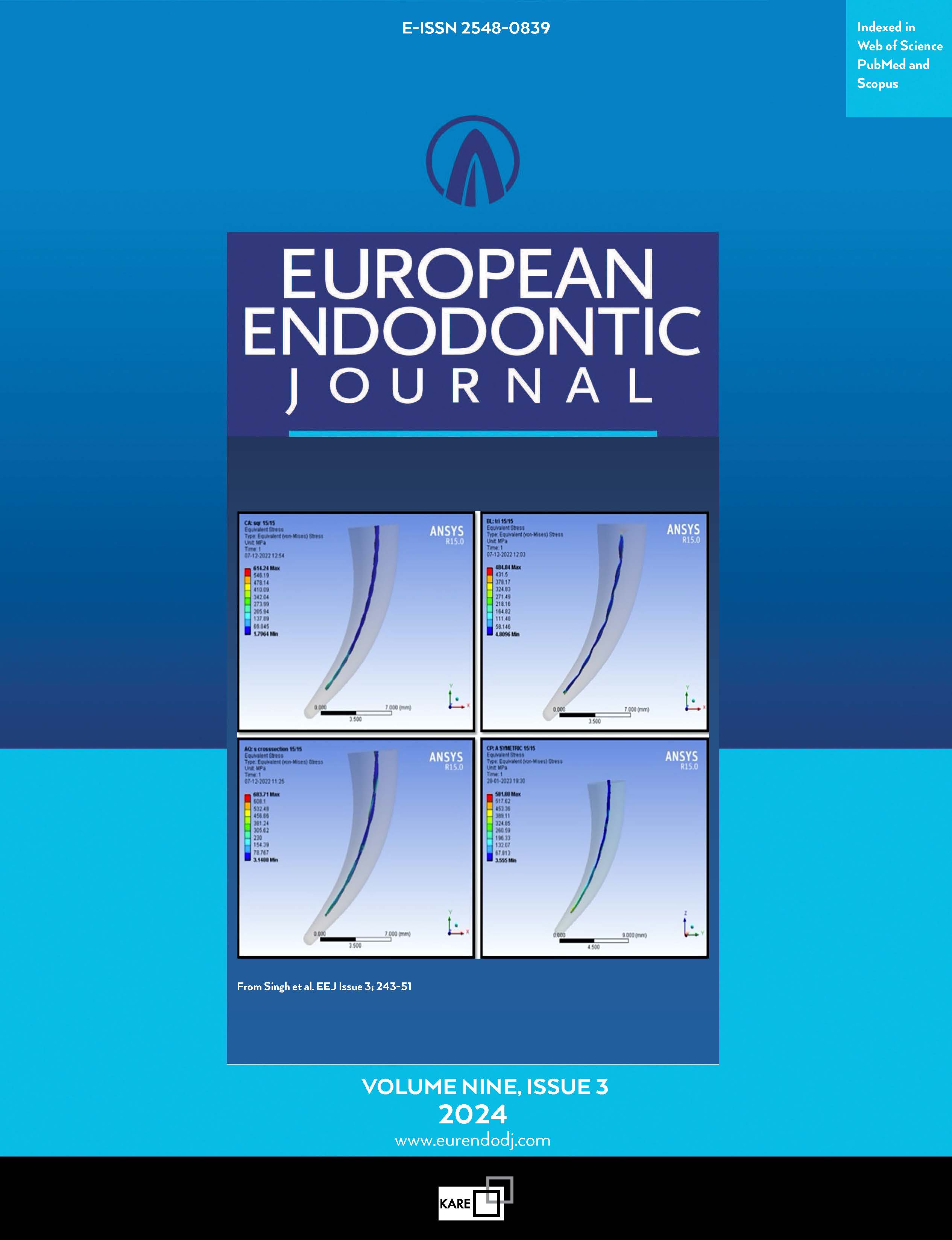Metrics
2023 IMPACT FACTOR
5 year Impact Factor
Eigenfactor
2023 CiteScore
Journal Citation Reports (Clarivate, 2024)(Dentistry, Oral Surgery & Medicine (Science))
Assessment of the Effect of Different Irrigation Protocols on the Penetration of Irrigation Solution into Simulated Lateral Canals (In Vitro Study)
Ahmed Qasim Talib, Hussain F. Al-HuwaiziDepartment of Conservative Dentistry and Endodontic, University of Baghdad College of Dentistry, Baghdad, IraqObjective: To compare the effectiveness of lateral canal irrigation penetration by conventional needle, passive ultrasonic, sonic endo activator, and Erbium laser (2780nm).
Methods: A total of 40 palatal roots of human maxillary first molars were collected and instrumented at a working length of 12 mm by an X1-X4 rotary Protaper Next system (Dentsply, Maillefer, Ballaigues, Switzerland) using the crown-down technique. Artificial lateral canals were made at 2, 4, and 6 mm from the apex on mesial and distal sides using an ISO rotary reamer (Dentsply, Maillefer, Ballaigues, Switzerland; #10 for mesial, #08 for distal). The samples were then cleared using methyl salicylate. A solution of black ink and normal saline was used as an irrigant for the root canal. The percentages of the penetration of the ink into the lateral canals were measured using a stereomicroscope (Q-Scope, Arnhem, The Netherlands) with the aid of program Image J. The Tukey test is used to assess the significant difference between intragroup and intergroup comparisons of different thirds, and the T-test is used to assess the significant difference between every two groups and for the mesial and distal sides of each group. The level of significance was set at 0.05.
Results: Results showed that none of the activation techniques used resulted in complete lateral canal penetrations; however, on both sides at all thirds, the Erbium laser (2780 nm) achieved the highest results with a highly significant statistical difference (p=0.05) with all other groups, and the least penetration was in the conventional needle group.
Conclusion: The size of the lateral canal is a restricting factor for all activation methods; the best results can be achieved by laser. Conventional needles cannot be used alone to disinfect complex canal anatomy; however, passive ultrasonic and sonic endo activator activations can produce comparable results. (EEJ-2022-11-132)
Manuscript Language: English
(561 downloaded)


